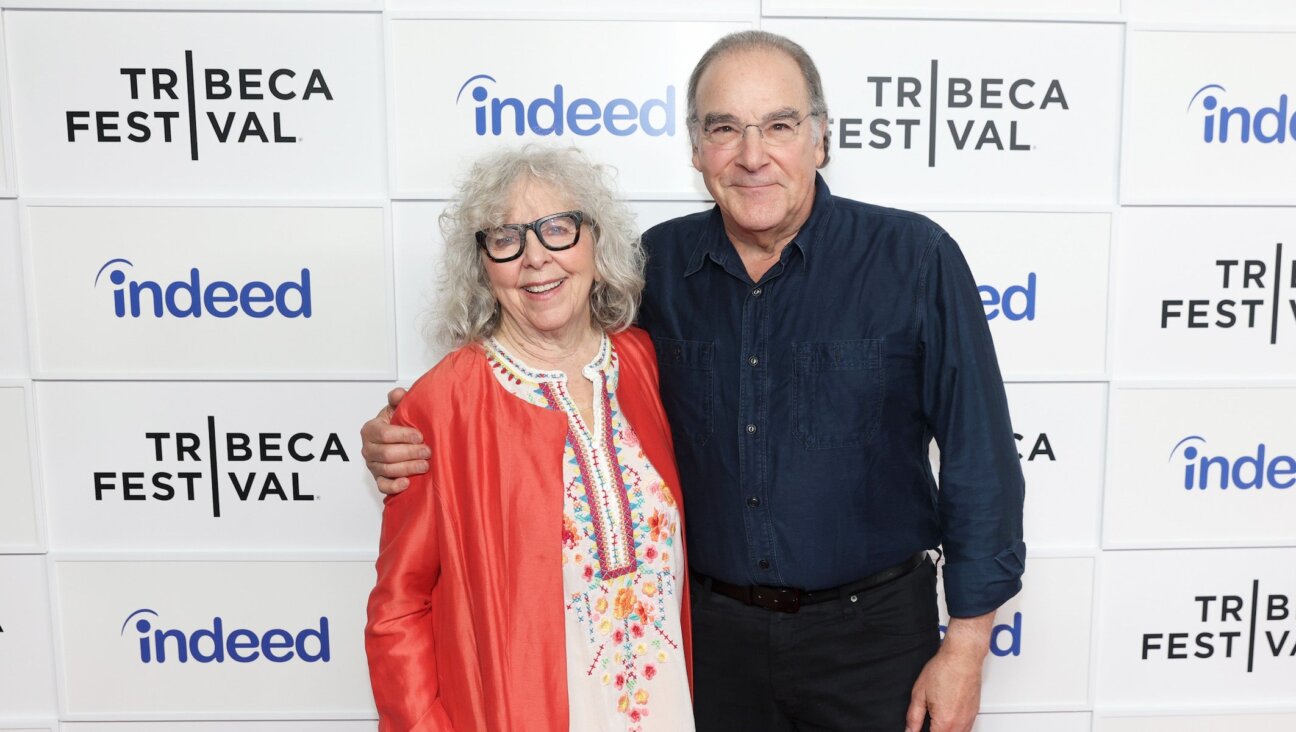A View From the Stands
Judaism’s Encounter With American Sports
Jeffrey S. Gurock
Indiana University Press, 248 pages, $29.95.
* * *|
Many a sports-obsessed Jewish kid will remember a Saturday buried somewhere deep in the past spent flipping through a dusty volume of “Great Jews in Sports” or one of its equivalents, whistling every few pages and exclaiming, “Wow! He’s Jewish?!” Although images of Sandy Koufax, Hank Aaron and Mark Spitz may dance in your head, “Judaism’s Encounter With American Sports” is hardly concerned with the achievements of the Chosen People’s athletic superstars. In fact, Yeshiva University Jewish history professor Jeffrey S. Gurock takes the opportunity to lambaste such works for serving as little more than a “Jewish cheering section.” Instead, Gurock takes a look at the role that athletics has played within the American Jewish experience and finds sports a useful magnifying glass for studying its dialectic of resistance to, and accommodation of, the surrounding American culture. Sports, in Gurock’s telling, have always been an accurate barometer for measuring Judaism’s relationship to American life and to its own internal squabbles.
In the early years of Jewish emigration from Eastern Europe, in the late 19th and early 20th centuries, many synagogues adopted the “shul with a pool” philosophy, reasoning that if athletic facilities could bring people into the building, eventually those same individuals would make their way to services, as well. This school of thought proved dubious at best, but it also served to emphasize the sea change between those immigrants from Eastern Europe and their children. The children of immigrants, seeking to be picked for the game of American life, embraced sports as a means of shedding their stereotypical reputation as weaklings and runts. The shuls-with-pools, and the YMHAs that opened, were burdened with inevitable questions regarding resistance vs. accommodation. Would athletic facilities be open on the Sabbath? Would YMHAs only serve kosher food? Was there a big enough push for the swimmers to make their way to morning prayers?
While many clergy were adamantly opposed to the secular Judaism of the nascent Jewish community center movement — with one rabbi noting that “the center movement’s philosophy is the philosophy of the swimming pool and gym…. It is the enemy of the synagogue” — others were more accommodating. Solomon Schechter, father of the Conservative day school movement, famously opined to aspiring clergy that “unless you can play baseball, you will never get to be a rabbi in America.”
Gurock devotes the largest chunk of his book to basketball and to the interior conflicts that sprang up around the sport in the second half of the 20th century. (Having served as Yeshiva University’s assistant basketball coach for the past 25 years, Gurock holds this topic dear to his heart.) In the early years of Y.U.’s basketball program, led by the legendary Red Sarachek, students and rabbis were torn between pride in their boys for physically representing the modern Orthodox ideal of being both good Jews and good Americans, and a growing dissatisfaction with the hero worship that surrounded athletics. As one editorial in a Y.U. newspaper of the time put it, undergraduates’ role models should be their roshei yeshiva, not some callow hoopsters.
In the world of Jewish high schools, basketball extended its tentacles beyond such Modern Orthodox institutions as Ramaz School and Yeshiva of Flatbush into the more enclosed world of boys-only schools, like Yeshiva Torah V’Daath and Yeshiva Rabbi Chaim Berlin. In the early 1940s, realizing that his students were both “frum boys” and “Brooklyn boys,” Torah V’Daath head Shraga Feivel Mendlowitz endorsed the notion of a basketball team, but difficulties crept in from the start. Whom could their boys play? What would happen when they played road games? What if, God forbid, girls attended games? Basketball was a subtle but important break from the Eastern European model of the yeshiva, in which the ghostliness of the students’ pallor was taken to be a direct correlation with their studiousness.
Yeshiva basketball may have begun as a means of proving how American the Orthodox Jews could be, but over time the wheel turned, and basketball became a means for proving how Orthodox they were. The right-wing high schools banned their teams from playing on bills with girls’ games, in the presence of cheerleaders or before co-ed dances. The Metropolitan Jewish High School League became the Metropolitan Yeshiva High School League. Many of its members were desperately opposed to letting the Solomon Schechter schools compete, for fear of Orthodox-Conservative fraternization and of accidentally providing Conservative Judaism with the imprimatur of Orthodox approval. What once had been a means of integration became a means of separation. And in the ultra-Orthodox world, the ideal of the frail, sickly scholar returned — with angry letters to the editor of a Jewish newspaper insisting that exercise was a waste of Torah time, since yeshiva bokhers had not exercised in Poland.
Not all was lost, though. If sports, at least in the Orthodox world, had been drained of its efficacy as an Americanizing force, it had not lost its ability to document the remarkable tolerance to religious difference exhibited in the United States. Take the case of Tamir Goodman, the teenage basketball star, who for a moment in the late 1990s was the toast of the media for his dedication to Orthodoxy. His career may have flamed out, but the willingness shown by the universities with which he was associated to accommodate his religious practice was remarkable. Some Jews may resist, but the dominant mode in contemporary American life toward Judaism is one of accommodation.
Saul Austerlitz, a writer living in New York, started at guard in the first-ever basketball matchup between his Orthodox high school, Shalhevet, and its rival, Yeshiva of Los Angeles. Shalhevet lost, through no fault of his own.





















